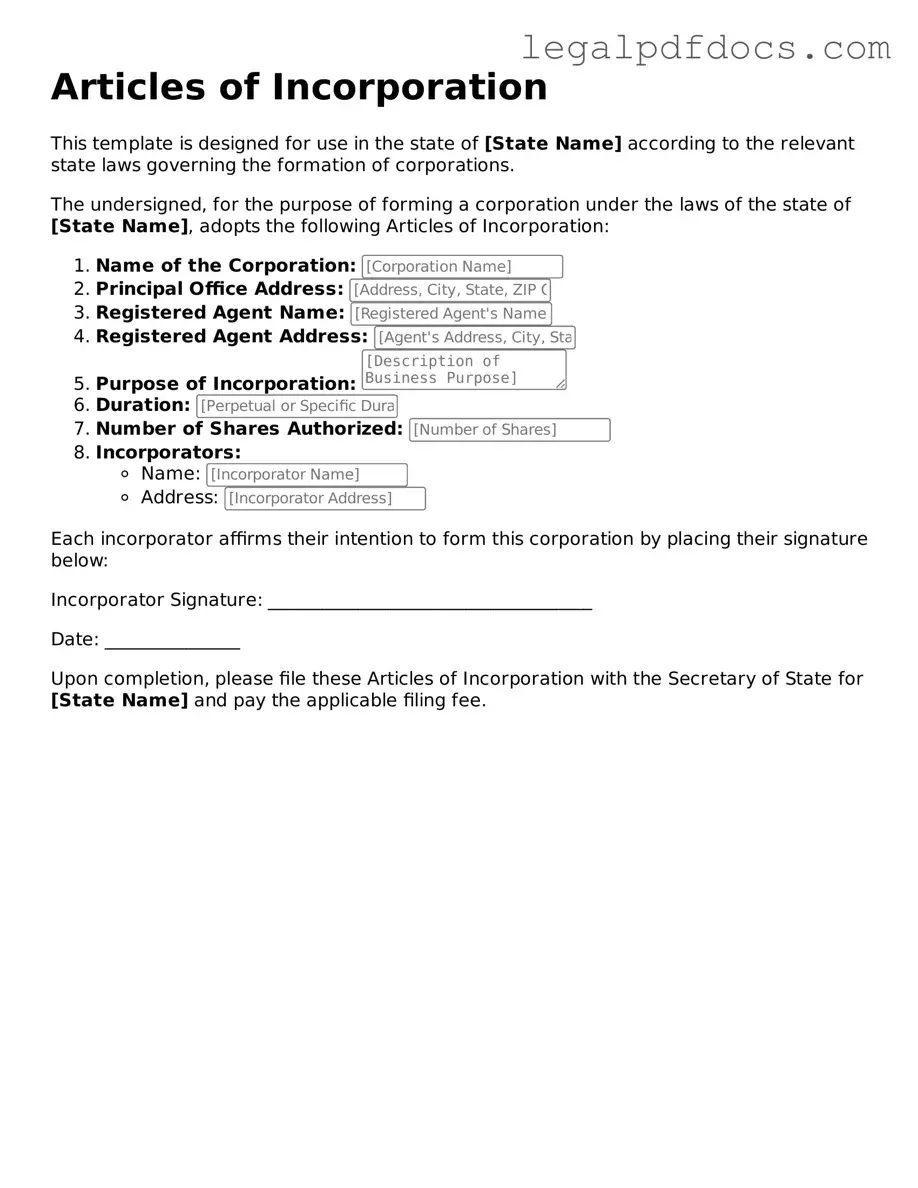The Articles of Incorporation form serves as a foundational document for establishing a corporation, outlining essential details that define the entity's structure and purpose. This form typically includes the corporation's name, which must be unique and comply with state regulations, ensuring it does not conflict with existing businesses. Additionally, it specifies the corporation's duration, which can be perpetual or for a defined period, and outlines the purpose of the corporation, providing clarity on the business activities it intends to pursue. The form also identifies the registered agent, a designated individual or entity responsible for receiving legal documents on behalf of the corporation. Furthermore, it includes information about the initial board of directors, detailing their names and addresses, which is crucial for governance. Lastly, the Articles of Incorporation may require the inclusion of the corporation's stock structure, specifying the types and number of shares authorized for issuance. Each of these components plays a vital role in the formation and operation of a corporation, ensuring compliance with state laws and providing a clear framework for governance and accountability.
